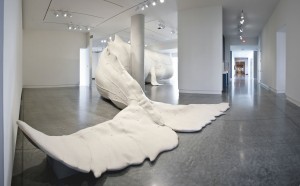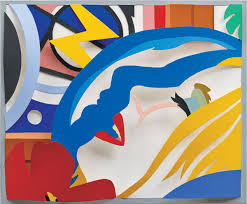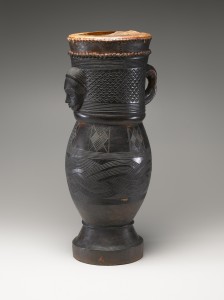 Alex Nyerges, director of the Virginia Museum of Fine Arts, has a message for all of us: “This is your museum.”
Alex Nyerges, director of the Virginia Museum of Fine Arts, has a message for all of us: “This is your museum.”
Indeed, VMFA’s $150 million expansion and transformation project, underway since November 2005, seems to reinforce Nyerges’ point – that art belongs to everyone and connects communities and cultures.
While a major objective of VMFA’s project is to increase exhibition space, connecting the Museum and the community is also an important goal. To this end, the architecture of the James W. and Frances G. McGlothlin Wing, a work of art in itself, connects the wing to the original 1936 building through a series of open bridges in the Cochrane Atrium. Further illustrating the desire to open up to the community, a 40 by 72 foot glass wall stands in the McGlothlin Wing. This window on the world, the largest unsupported glass wall in North America, provides neighbors and visitors outside VMFA with a view into the Museum from Boulevard, while allowing guests inside VMFA a chance to look out over the surrounding neighborhood.
And what neighborhood gathering would be complete without food? The McGlothlin Wing will not only nourish your soul as you enjoy the hundreds of artists on exhibit, but its three kitchens will quite literally feed you. The first floor lunchroom adjacent to the Art Education Center is perfect for school groups with their packed meals. Across the atrium,
contractors put the finishing touches on the Louise B. and J. Harwood Cochrane Atrium at the heart of VMFA’s new James
Visitors will find Best Café with a pizza oven and family friendly favorites including grilled cheese, hot dogs, and peanut butter and jelly. Amuse, a sleek and modern restaurant on the third floor and an option for your next night out on the town, will feature an innovative menu with fresh local foods and ingredients.
 Upon completion, the E. Claiborne and Lora Robins Sculpture Garden at the center of the expansion project, will connect the six hundred car parking deck, expanded gallery space, and studio school. The garden will include three and a half acres of green space with shade and ornamental trees, perennial beds and reflecting pools. VMFA will host concerts and special events here in the garden, and will also make the space available for private weddings.
Upon completion, the E. Claiborne and Lora Robins Sculpture Garden at the center of the expansion project, will connect the six hundred car parking deck, expanded gallery space, and studio school. The garden will include three and a half acres of green space with shade and ornamental trees, perennial beds and reflecting pools. VMFA will host concerts and special events here in the garden, and will also make the space available for private weddings.
The first exhibition in the Robins Sculpture Garden will be from the ceramic collection of Jun Kaneko. Kaneko is a Japanese-American artist who creates giant ceramic heads reminiscent of the statues on Easter Island. These colossal structures (eight to ten feet high and weighing in at over a ton) are the largest free-standing fired ceramics in the world and were recently seen on display along Park Avenue in New York. In the future, VMFA will seek to commission artists to produce other large-scale sculptures for this exhibit space.
Young visitors will gain inspiration from the increased studio space of the Art Education Center, where groups learn about art and artists, tour the Museum, and return to the studio space to unleash their creative genius. Every class spends time in the gallery as part of its program. “This creativity is what makes the Museum so special,” Nyerges says.
Della Watkins, associate director of education and statewide partnerships, has similar ideas about children and art museums. Says Watkins, “We don’t want a visit to VMFA to be a quiet, dusty experience. We want it to be fun and engaging!”
Educators at VMFA are currently developing thematic self-discovery weekend activities to help engage families while exploring at the Museum. “Carried Away, For example, will encourage families to look for things in the Museum that carry people or that people carry,” Watkins says.
In addition to VMFA’s comprehensive slate of classes and workshops for children of all ages, Watkins promises an abundance of weekend activities including family events and child-friendly programming.
Visitors can also look to comprehensive audio guides throughout the Museum to elaborate on artists and techniques. Contextual maps in the galleries tell visitors where they are in history – particularly important when you consider VMFA’s collections feature works of art dating back six thousand years. Says Watson, “An Egyptian mummy will be on exhibit, as will many other extraordinary primary sources, such as a statue of a seated scribe from 664 to 661 B.C.”
The ability to communicate through art bridges time periods, cultures and languages. The newly expanded VMFA, right here in our neighborhood, extends to visitors the opportunity to come together in a transforming experience shared with the entire family and the whole community.



